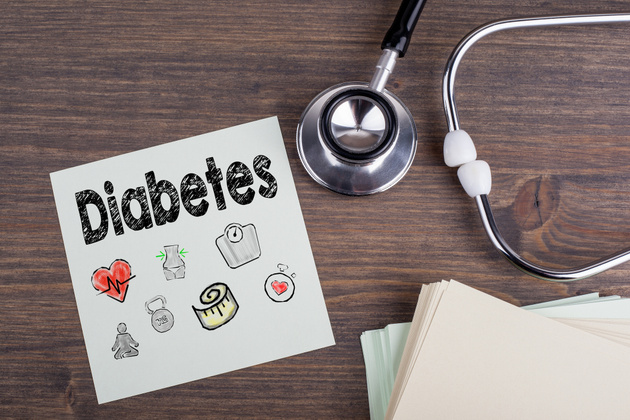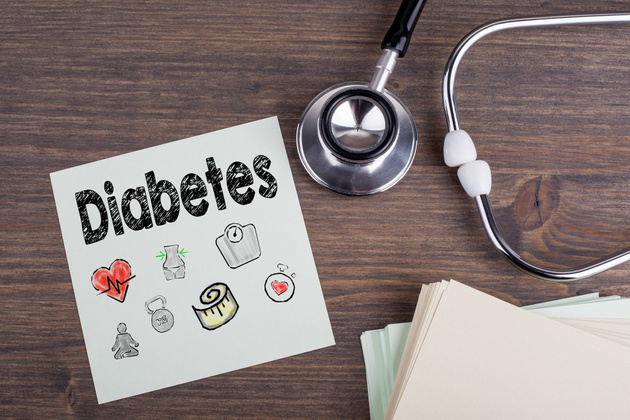What is Type 2 Diabetes? What are the symptoms?
Diabetes, also known as diabetes among the public, is one of the most important public health problems today. According to International Diabetes Federation data, 1 in 11 people aged 20-79 worldwide has diabetes, and this number is expected to increase to 1 in 10 by 2045. Diabetes, which has many undiagnosed cases, affects the organs and vital functions of patients and reduces their quality of life. Although there are some very rare types, there are two types of diabetes in society. Type 1 diabetes, also called Juvenile Type, is a type of diabetes that often occurs in children and young people. In type 1 diabetes, there is a defect in insulin production from beta cells in the pancreas. Type 2 diabetes is the most common form of diabetes in society. Although there is insulin production in type 2 diabetes, there is a problem in the use of insulin at the cellular level.

What is Type 2 Diabetes?
Diabetes is a metabolic disease characterized by high levels of glucose circulating in the blood, that is, blood sugar. The insulin hormone secreted from the pancreas regulates glucose metabolism in the body. Insufficient or no secretion of this hormone causes diabetes. The largest energy source of all cells in the human body is glucose, that is, blood sugar. The brain uses only glucose as an energy source. Carbohydrates, fats and proteins taken with food are broken down into building blocks such as glucose, fatty acids and amino acids in the intestines and pass into the circulatory system. In order for glucose to be used as an energy source, it must enter the cell from the circulatory system. This is where the insulin hormone comes into play. The insulin hormone secreted from the pancreas into the bloodstream plays a role in the entry of glucose from the blood into the cells. If insulin secretion from the pancreas decreases, the entry of glucose into the cell will be impaired, thus the glucose level in the blood increases and diabetes develops. It is quite wrong to think of diabetes as just high blood sugar and to simplify this disease. High circulating blood sugar in the blood; It accumulates in capillaries, organs and nerves and causes many diseases.
Type 2 Diabetes Symptoms
Glucose, which passes into the blood through nutrition, cannot enter the cells in the absence of the insulin hormone and blood sugar rises. Increased blood sugar level in the blood is called hyperglycemia. To diagnose hyperglycemia, the normal blood sugar value after 8 hours of fasting must be 80-100 mg/dl. If high blood sugar is not controlled and the high level continues, it causes serious structural damage to internal organs. Symptoms of diabetes due to high blood sugar are called the classic 3P symptoms of diabetes. These symptoms can be listed as follows:
- Polydipsia (Excessive thirst and desire to drink water, significant increase in fluid intake)
- Polyuria (urinating too often)
- Polyphagia (desire to eat too much, increased appetite)
Apart from these, other common symptoms of type 2 diabetes include fatigue and weakness, dry mouth, frequent and excessive hunger, intolerance to hunger, acetone odor in the mouth, and involuntary weight loss. Blurred vision and visual disturbances may occur due to fluid withdrawal from the eye lens. Due to the damage caused by high blood sugar to the nerves, neuropathic pain such as numbness or a burning or stinging sensation in the hands and feet, especially in the soles of the feet, may be observed. Wounds that do not heal because high blood sugar impairs wound healing may also be a sign of diabetes.
Causes of Type 2 Diabetes
As a result of many studies on the causes of diabetes, it has been determined that genetic and environmental factors affect this disease together. In type 2 diabetes, although insulin is produced in the body, there is a problem in the use of insulin at the cellular level. Two important factors play a role in the development of type 2 diabetes.
- Insulin production from beta cells is not sufficient to meet the body’s needs.
- In a situation called insulin resistance, insulin cannot act at the cellular level due to a mechanism disorder in the cells and glucose cannot enter the cell.
In addition, factors that increase the risk of developing type 2 diabetes can be stated as follows:
- Obesity (fatness)
- Having a history of diabetes in the parents
- advanced age
- sedentary lifestyle
- extreme stress
- Development of gestational diabetes in women during pregnancy or history of giving birth to a baby that is heavier than normal
Type 2 Diabetes Diet
The main aim of diabetes treatment is to control blood sugar. Acquiring healthy living and eating habits before all treatments is the most important step in blood sugar control. As in all individuals, regular and quality nutrition, which will form the basis of a healthy life, is very important, especially for individuals with diabetes. It is necessary to learn adequate and balanced nutrition and to make lifestyle changes so that all this learning is reflected in daily life. The balance of carbohydrates, fats and proteins that should be consumed daily should be adjusted well. Nutrition should be made in the form of 3 main meals and in some cases snacks. A food source high in calcium, such as yoghurt and buttermilk, should be consumed in main meals. These foods reduce sudden drops and rises in blood sugar. Foods with a low glycemic index should be consumed, such as whole wheat and rye bread instead of white bread, bulgur or whole wheat pasta instead of white rice.
Foods to Avoid
- Saturated fats: Foods such as high-fat dairy products, animal proteins (fatty meats, sausages, salami, etc.) should not exceed more than 7% of the daily calorie intake.
- Trans fats: Trans fats found in processed foods and margarines should not be consumed.
- Cholesterol: The daily consumption amount of cholesterol, which is found in high amounts in foods such as high-fat dairy products, animal proteins, eggs, shellfish and offal, should not exceed 300 mg.
- Salt: The daily consumption of salt, which plays a role in glucose reabsorption from the kidneys, should not exceed 1 teaspoon.



